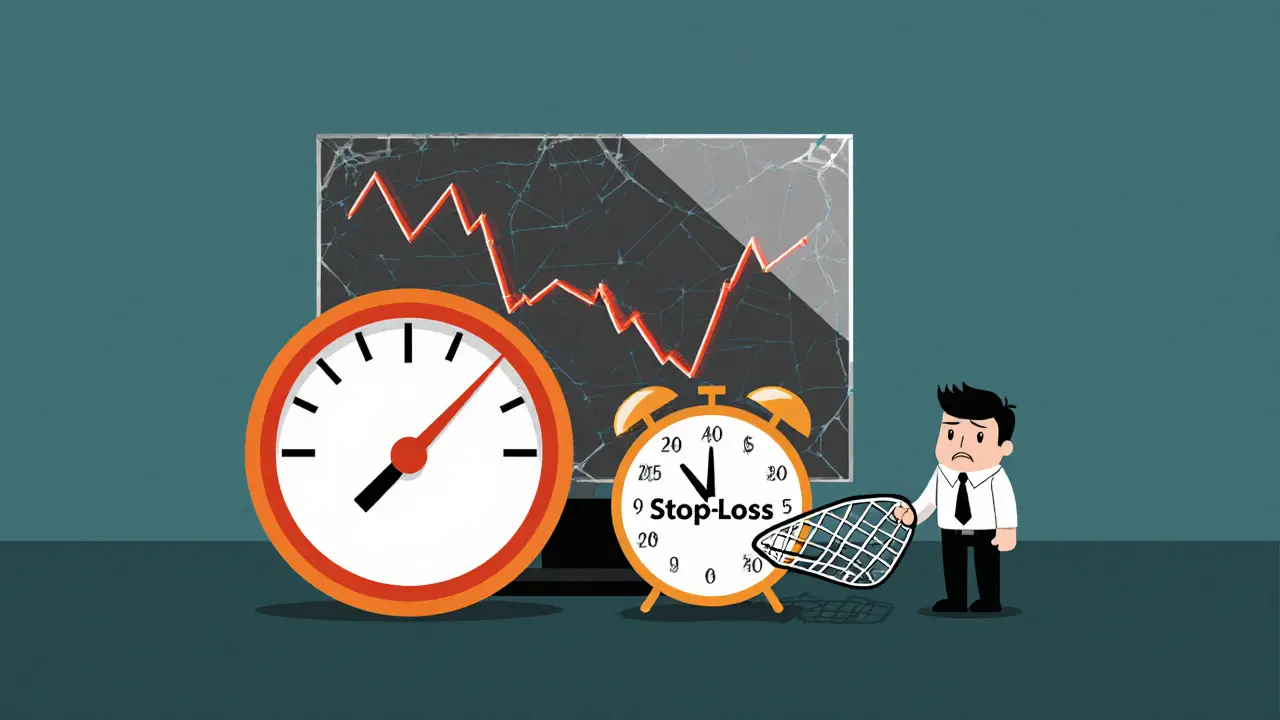Crypto Leverage Explained: How to Trade Safely with Borrowed Funds
 Dec, 31 2024
Dec, 31 2024
Crypto Leverage Risk Calculator
Risk Assessment Tool
Calculate your liquidation price and risk exposure based on leverage level and stop-loss settings.
Risk Assessment
When people talk about Leverage in Crypto Trading is the practice of using borrowed funds from an exchange to control a position larger than your actual capital, they’re really describing a high‑stakes game of amplification. The upside is obvious - a 5% move in Bitcoin can become a 500% gain with 100x leverage - but the downside is just as brutal. This guide walks you through the mechanics, the risks, and the tools you need to keep your account from vaporizing.
What Exactly Is crypto leverage?
At its core, crypto leverage lets you open a position that’s a multiple of the collateral you put down. If you deposit $1,000 and trade with 10x leverage, you control $10,000 worth of Bitcoin. The trade’s profit or loss is calculated on the full $10,000, not just your $1,000.
Leverage first appeared in traditional finance, then jumped to crypto around 2017 when BitMEX launched perpetual futures contracts that allowed traders to borrow up to 100x the notional value of their trade. Since then, most major exchanges have added similar products.
How Leverage Works: Margin, Liquidation, and Funding Rates
Three technical pillars keep leveraged trading alive:
- Margin is the collateral you must lock up. Higher leverage means lower margin - 10x typically needs 10% margin, while 50x may require only 2%.
- Liquidation occurs when your equity falls below the maintenance margin (often 0.5‑1%). The exchange closes your position to protect itself from further loss.
- Funding Rate is a periodic payment exchanged between long and short traders on perpetual contracts. It keeps the contract price anchored to the spot index and typically ranges from 0.01% to 0.1% per 8‑hour window.
Understanding these three pieces helps you predict when a trade might be forced to close and how much extra cost you’ll incur.
Choosing the Right Leverage Level
Beginners often chase the highest numbers, but data shows that retail traders using more than 10x have a 78% chance of complete account liquidation within six months (UC Berkeley, 2022). A safer sweet spot for most retail participants sits between 2x and 5x, where you still amplify gains without exposing yourself to catastrophic margin calls.
Here’s a quick rule‑of‑thumb:
- Start with 2x‑3x while you’re learning the platform’s UI.
- Move to 5x only after you’ve mastered stop‑loss placement and position sizing.
- Reserve 10x‑25x for very short‑term trades on low‑volatility pairs, and never exceed it without a solid risk‑management plan.

Real‑World Risks: What Can Go Wrong?
Leverage shines in sideways markets, but it turns into a nightmare during sudden spikes. The May 2021 Bitcoin crash saw exchanges offering 100x leverage liquidate over 85% of open positions, while those capped at 25x barely cleared half that volume. The Terra/Luna collapse in May 2022 triggered $850 million in liquidations across multiple platforms.
These events illustrate two core risks:
- Speed of liquidation: A 5% adverse move can wipe out a 20x leveraged position in minutes.
- Funding‑rate drag: In a prolonged sideways market, paying 0.1% every eight hours can erode profits fast.
Risk‑Management Best Practices
Even the most aggressive traders use a safety net. Implement these habits:
- Stop‑loss orders: Place them 1‑2% below entry for 2x‑5x leverage; tighten to 0.5% for higher leverage.
- Position‑size calculator: Determine how much of your account you’re willing to lose on a single trade (commonly 1‑2%).
- Reduce‑only orders: Use them during volatile news events to prevent accidental position expansion.
- Adaptive leverage tools: Some exchanges, like Kraken, automatically lower your leverage as volatility spikes, lowering liquidation risk.
Regulatory Landscape: Why Leverage Is Shrinking
Regulators worldwide have started reining in extreme leverage. The EU’s MiCA framework caps retail crypto leverage at 2‑5x, while the U.S. SEC has limited most platforms to a maximum of 25x for U.S. customers. Exchanges such as Coinbase Advanced Trade offer only 5x after the 2023 enforcement actions. These rules aim to protect inexperienced traders, but they also push high‑risk users toward offshore platforms with looser oversight.
Platform Comparison Table
| Exchange | Max Leverage | Margin @ Max | Liquidation Method | Notable Feature |
|---|---|---|---|---|
| Binance | 125x (select contracts) | 0.8% (125x) | Full liquidation | Insurance fund for partial protection |
| Kraken | 50x | 2% (50x) | Partial liquidation at 0.5% step | Adaptive leverage auto‑adjust |
| Bybit | 100x | 1% (100x) | Insurance‑fund‑backed liquidation protection | "Reduce‑only" mode for volatile spikes |
| Coinbase Advanced Trade | 5x (US customers) | 20% (5x) | Full liquidation | Mandatory knowledge‑quiz before higher tiers |
Quick Checklist Before You Trade
- ✅ Verify your account and complete KYC (most platforms require it for >$1,000 positions).
- ✅ Pass the exchange’s leverage‑knowledge quiz (usually 80%+).
- ✅ Set a stop‑loss at 1‑2% below entry for 2x‑5x leverage.
- ✅ Check the current funding rate - high rates can eat profits quickly.
- ✅ Keep an eye on maintenance margin; avoid dropping below 0.5% of position value.
Frequently Asked Questions
What is the difference between margin and leverage?
Margin is the collateral you lock up, while leverage is the multiplier that tells you how many times larger your position can be compared to that collateral.
Can I lose more than my deposit?
Yes. If a position is liquidated and the loss exceeds your margin, the exchange may pursue the shortfall, especially on uncovered futures contracts.
How are funding rates calculated?
Funding rates are derived from the difference between the perpetual contract price and the underlying index price, plus an interest component. They are announced every eight hours.
Is crypto leverage legal in the United States?
It is legal, but regulators restrict the maximum leverage for retail customers (currently 25x on most U.S.‑compliant platforms).
What’s the safest leverage ratio for beginners?
Most experts recommend staying at 2x‑3x until you’ve mastered stop‑loss placement and understand margin calls.
Leverage can be a powerful tool, but it’s also a double‑edged sword. By learning the mechanics, respecting risk limits, and staying aware of regulatory changes, you can use borrowed capital to boost returns without blowing up your account.
Derajanique Mckinney
October 25, 2025 AT 13:02Rosanna Gulisano
October 26, 2025 AT 03:45Sheetal Tolambe
October 26, 2025 AT 10:33gurmukh bhambra
October 26, 2025 AT 21:06Sunny Kashyap
October 27, 2025 AT 02:14james mason
October 27, 2025 AT 23:42Anna Mitchell
October 28, 2025 AT 05:50Pranav Shimpi
October 28, 2025 AT 13:49jummy santh
October 29, 2025 AT 05:20Kirsten McCallum
October 29, 2025 AT 19:03Henry Gómez Lascarro
October 29, 2025 AT 21:28Will Barnwell
October 29, 2025 AT 23:09Lawrence rajini
October 30, 2025 AT 22:00Derajanique Mckinney
October 30, 2025 AT 23:27